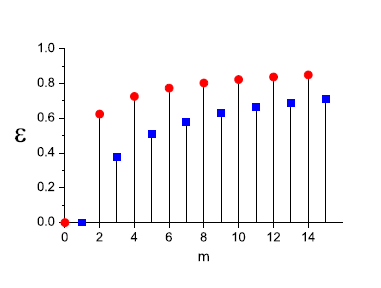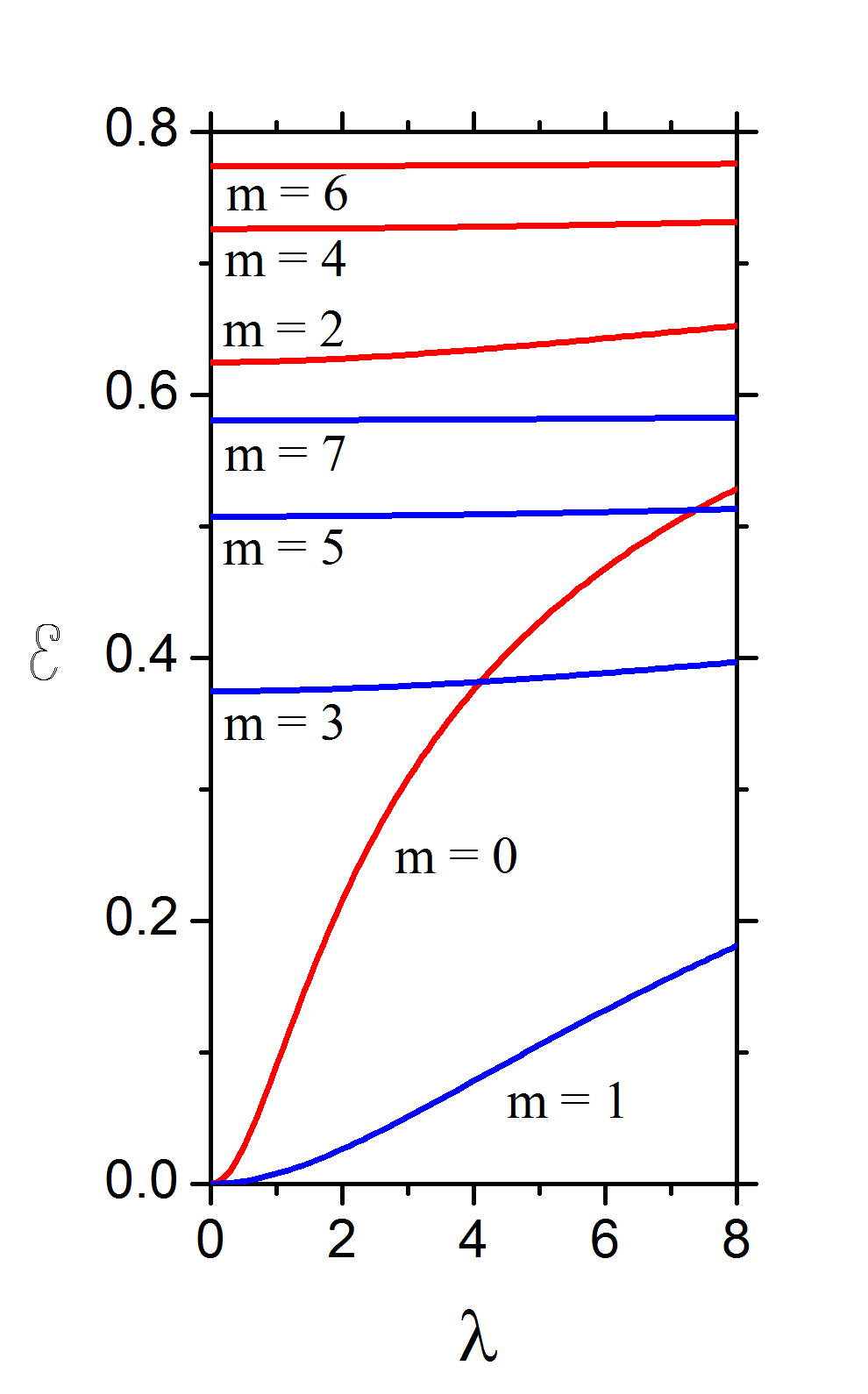ENTANGLEMENT OF FERMIONIC STATES
Entanglement measures
The entanglement of a pure state of a bipartite quantum system can be quantified uniquely by the entropy of one of its subsystems. Namely, if the global pure state Ψ is entangled, i.e., it cannot be factorized into individual pure states of the subsystems, each of the subsystems (1 and 2) is in a mixed state. The degree of mixing can be determined by means of the von Neumann entropy
ℰVN = -Tr(ρ1 lnρ1) = -Tr(ρ2 lnρ2),where ρ1 = Tr2|Ψ⟩⟨Ψ| and ρ2 = Tr1|Ψ⟩⟨Ψ| are the reduced density matrices, describing the mixed states of subsystems 1 and 2, respectively. Alternatively, one can calculate the linear entropy
ℰ = 1 - Tr(ρ1)² = 1 - Tr(ρ2)²that can be obtained from the von Neumann entropy by expanding the logarithm of the reduced density matrix and retaining the leading term. Both entropies meet the necessary requirements for an entanglement measure. The linear entropy, however, is more convenient to compute.
Entanglement measure for states of two identical fermions
For the systems consisting of two identical fermions (e.g. electrons) the measure must be modified in order to exclude the contribution related to the antisymmetric character of fermionic states. The correlations due to the Pauli principle do not contribute to the state’s entanglement. For instance, a two-fermion state of a Slater rank 1 (i.e., a state represented by one Slater determinant) must be regarded as nonentangled and its measure has to be zero. In order to satisfy this requirement, the entanglement measure based on the linear entropy in the case of two identical fermions has the form
ℰ = 1 - 2 Tr(ρr)².Here ρr is the reduced single-particle density matrix obtained by tracing the two-particle density matrix ρ = |Ψ⟩⟨Ψ| (describing the pure state Ψ) over one of the two particles. As a result, for a factorized wave function Ψ = ψ (r1,r2) χ (σ1,σ2) (ψ and χ are the orbital and spin parts of Ψ) measure ℰ transforms to the following form
ℰ = 1 - 2 Tr[ρr(orb)]² Tr[ρr(spin)]²,where ρr(orb) and ρr(spin) are the reduced single-particle density matrices in the orbital and spin spaces, respectively. In principle, the trace of [ρr(orb)]² has to be calculated in some single-particle basis. It is shown in Ref. [1] how it can be determined in a convenient way.
The trace of [ρr(spin)]² in the two-electron spin states with a definite symmetry χS,Ms has values 1/2 if MS = 0 (antiparallel spins of two electrons) and 1 if MS = ±1 (parallel spins), i.e.,
Tr[ρr(spin)]² = (1 + |MS|)/2.Two-electron quantum dots
The Hamiltonian of a circular (2D) two-electron quantum dot (QD) reads
H = p1²/2m* + p2²/2m* + ½m*ω²r1² + ½m*ω²r2² + λ/r12,where m* is the effective electron mass and λ is the parameter describing the strength of electron-electron (Coulomb) interaction.
Entanglement of the lowest two-electron states in the limit of noninteracting electrons
Linear entropy of the lowest two-electron states with different values of the magnetic quantum number for relative kretanje (m) is in the limit of noninteracting electrons (λ → 0) given by analytical expression [1]

It follows that the lowest states with m = 0 and 1 are not entangled (in this limit), but those with m > 1 are.

Dependence of ℰ on the electron-electron interaction strength

Linear entropy of the lowest states with different m as function of the electron-electron interaction strength parameter [1].
References
[1] N. S. Simonović and R. G. Nazmitdinov, Phys. Rev. A 92, 052332 (2015)Back to the personal home page